US strategic nuclear forces and missile defense facilities on Google Earth satellite imagery
American strategic nuclear forces consist of: maritime, terrestrial and air components. As of 1 March 2013, the United States had a total of 792 deployed intercontinental ballistic missiles (ICBMs), submarine-launched ballistic missiles (SLBMs) and heavy bombers (TB). The number of strategic carriers in Russia at that time was 492. The US had 1654 nuclear warheads on deployed ICBMs, SLBMs and TB. Russia had 1480 nuclear warheads on the same carriers.
According to the START-3 Treaty, by February 2018 the number of “operational deployed” nuclear warheads (YABZ) each side should not exceed 1550 units, and the number of strategic carriers - 800 units, of which “operational deployed” should have no more than 700 carriers .
At the same time, the United States has significant "return potential". These are nuclear warheads taken from carriers, but not disassembled, but stored in warehouses. The use of the “return potential” allows the US to more than double the total number of warheads in the START-3 conditions (from 1550 to 3342 units).
The basis of the American strategic forces are ballistic missiles placed on submarines (SLBMs). Each Ohio-type SSBN is equipped with a Trident-24 2 SLBM (D 5). At the moment, the naval component of the US strategic nuclear forces are 14 nuclear submarines (SSBNs) with 336 SLBMs.
The UGM-133A Trident-2 BR (D5) has a maximum range of 11 300 km and has a split head with individual targeting units equipped with 475 and 100 kilo-ton thermonuclear charges. Due to the high accuracy of an SLBM of this type, it is capable of effectively hitting small-sized, highly protected targets - in-depth bunkers and silo launchers for intercontinental ballistic missiles. The Trident-2 is the only SLBM left in service with the US Navy SSBNs. The warheads deployed on the Trident-2 constitute 52% of the US strategic nuclear forces. In accordance with the current SALT contract, submarine missiles cannot carry more 8 warheads.
In the US, there are two facilities where SSBNs are based. On the Pacific coast is Bangor, Washington. On the Atlantic coast is Kings Bay, Georgia. Both naval bases have a developed infrastructure for the maintenance and servicing of SSBNs.
Due to the ability to conduct long-term patrols while underwater, SSBNs are complex for satellite visual reconnaissance objects. It is much easier to observe the submarines at berths, docks and disposal points.
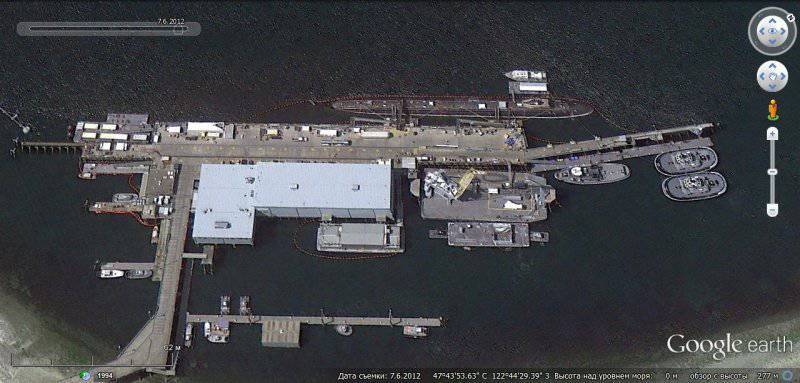 [/ Center]
[/ Center]The naval component of the American nuclear triad is the most efficient part of it, the American boats are at sea 60% of the time in a year (that is, about 219 days in a year), unlike Russian boats, which patrol no more than 25% of the time in a year ( 91 day per year).
The ground component of the US Strategic Nuclear Forces is comprised of strategic missile systems equipped with intercontinental ballistic missiles (ICBMs). Currently deployed to 450 "Minuteman-3" in mine launchers (silos). The LGM-30 “Minuteman-3” missiles are serving in the US Air Force since 1970 and are the only land-based ICBMs in service. The solid-fuel rocket "Minuteman-3" carries the 12 unit with 3 W78 warheads of individual guidance, with a range of up to 13000 km. Some of the minetmen in service were modernized and equipped with new Mk 21 warheads with a W87 warhead.
By 2013, it was planned to install one W87 warhead on all 300 LGM-30G Minuteman-III missiles at Warren (Wyoming) and Malstrom (Montana) air bases. The 150 missiles at Minot Air Base (North Dakota) will continue to be on duty with W78 warheads.
The Minuteman-3 rockets are obsolete today, they do not have a missile defense system. A number of test launches of missiles taken from among those on duty were deemed unsuccessful. Thus, it can be assumed that a significant part of US ground-based ICBMs are not capable of performing the combat mission. However, I would like to hope that this will never be tested in practice.
Aviation strategic nuclear bombers are capable of solving nuclear missions. All strategic bombers have dual-use status: they can strike using both nuclear and conventional weapons.
As part of the aviation component of the US strategic nuclear forces at five aviation bases as of 2012 year, there were approximately three 130 bombers of three types in the continental US - B-52H, B-1В and B-2А.
The most “deserved” is the B-52H, the production of this aircraft was completed at the end of the 1962 year. The bomber has the status of "dual purpose" and is able to use both nuclear and conventional weapons. Conversion to nuclear or non-nuclear status is conditional and does not require any modifications or changes in the design of the suspension assemblies of ammunition. B-52H aircraft are carriers of long-range air-based cruise missiles (ALCMs) (both in nuclear and non-nuclear equipment) and at maximum load can carry 20 missiles (eight on a universal rotary launcher in the bomb bay and 12 on an external suspension) .
The strategic bombers B-52H are currently best suited to conduct combat operations with conventional weapons in the interests of the general-purpose forces. To expand the capabilities of these aircraft for the use of conventional weapons, active work is being carried out to equip them with advanced high-precision weapons systems, additional observation tools and EW. Despite the long duration of operation, the aircraft maintains high flight qualities, has a significant range, is capable of carrying a large bomb load and a variety of weapons. Its main drawback remains the relatively low ability to overcome the air defense of the likely enemy. In this regard, the command of the US Air Force assigns to it the priority role of the carrier of the ALCM operating outside the zone of active air defense weapons. The B-52H bomber fleet as part of the US Air Force is gradually being reduced, however, it is planned that they will remain in service, at least until 2030, in an amount of about 40 units.
B-1В strategic bomber, commissioned in July 1985, supplies to the troops were completed in August, 1988. There are about 50 units in combat, 12 is still in active reserve.
B-1B aircraft are considered by the US Air Force Command as the main bombers for operations with conventional means of destruction, in connection with which measures are being taken to convert them to non-nuclear status.
To improve the effectiveness of combat use of the B-1B, a program is being implemented to further modernize strategic bombers in order to expand the set of guided aircraft used, as well as to improve onboard systems. After modernization, the B-1B strategic bombers are planned to be used independently or as part of mixed air formations for strikes, both from long ranges and in the zones of operation of the enemy’s air defense system.
The B-2A strategic bomber was adopted in December 1993. The aircraft, made using the stealth technology, is designed to covertly overcome modern air defense systems and subsequently defeat strategic objects in the depth of the enemy’s territory, primarily mobile ICBM complexes, with both nuclear and conventional weapons.
The 16 of such vehicles is in service. Of the 20-launched bomber of this type, the 2 is lost in flight accidents.
The permanent home base of the B-2A bomber is Whiteman Air Base (Missouri). At the same time, these planes are regularly redeployed to other airfields; quite often they land at Andersen airbase, on the island of Guam.
Under normal peacetime strategic bombers were deployed in five major air bases continental United States: Minot (North Dakota) - 22 In-52N, Ellsworth (South Dakota) - 24 In-1V, Whiteman (Missouri) - 16 In-2A, Dyce (Texas) - 12 B-1B and Barksdale (LA) - 41 B-52H.
During the development of tasks in the zones of the Pacific and Indian Oceans and the European zone, temporary bases for strategic aviation can be used up to 16 airfields.
The START-3 treaty for deployed strategic bombers introduced a counting rule for YABZ, according to which only one nuclear warhead is counted for one bomber, and it was the American side that insisted on the introduction of this rule.
The United States has thus virtually removed its nuclear weapons, primarily the ALCM, from quantitative control. Now, the United States, having any number of nuclear ALCMs in service, may not at all present the latter for control procedures of the START-3 Treaty, but “report” under the latter, for example, only with 60 nuclear bombs.
Currently, only for the aviation component of the triad are developed qualitatively new nuclear means of destruction - the next-generation cruise missiles of air-based (ALCM) and guided bombs with high-precision guidance. The nuclear weapons of the land and sea components of the triad are only being upgraded. Moreover, according to the statements of high-ranking US military, new strategic bombers will be equipped with all nuclear weapon carriers without exception: both existing B-2A and B-52H, as well as promising.
It should be added that as a result of the nearly twenty-year reduction of strategic offensive arms of the Russian Federation and the United States, the land and sea components of the United States nuclear triad have largely lost their counter-force potential with respect to Russia's strategic nuclear forces, which include a group of mobile ground rocket complexes. Apparently, this circumstance does not suit the American military-political leadership, which continues to lay claim to the unconditional global leadership of its country in the new century.
This largely explains the US withdrawal from the ABM Treaty. In the conditions of a quantitative reduction of the SNF, in the event of a global conflict, the emphasis is on the possibility of destroying carriers in the home areas, in a preventive strike and interception of the surviving and launched BR.
The Patriot air defense system PAC-3 with the ERINT antimissile has certain anti-missile capabilities. According to the creators of the missile ERINT, it is able to destroy ballistic missiles with a range of up to 1000 km.
However, this system is intended primarily for intercepting tactical and operational tactical missiles in a theater of operations. It is not capable of intercepting ICBM warheads.
To protect the territory of the United States from the ICBM warhead is created: "The US National Missile Defense System" (NMD). It is a comprehensive system for detecting, tracing and intercepting ballistic missiles of various classes designed to protect the territory of the United States, as well as their allies and advanced military bases, from missile attacks.
It is a complex of early warning radar (early warning), satellites tracking rocket launches, launchers and guidance stations for land-based and sea-based interceptor missiles designed to destroy warheads of small, medium and intercontinental radius as in outer space, and in the atmosphere at different sites of the trajectory.
October 2 The US 1999 conducted the first test of a prototype NMD system, during which a Minuteman missile with a target warhead was shot down over the Pacific. And in June, the US 2002 officially withdrew from the 1972 Treaty of the year on limiting missile defense systems.
The main component of the US national missile defense system is a ground-based ballistic missile interception system in the middle section of the trajectory known as Ground-Based Midcourse Defense (GBMD). This complex consists of an early warning and tracking radar system, tracking the movement of targets in outer space, and silo-based antimissiles. The defeat of targets - ballistic missiles and their warheads is carried out by a kinetic warhead on a head-on course.
At the moment, the GBMD complex is the only component of an NMD system capable of intercepting intercontinental ballistic missiles. The range of the complex is limited only by the capabilities of space tracking radars, and with the introduction of a mobile sea-based radar, the complex acquired the potential ability to hit space objects at any point on the globe.
The SBX PRO radar with a phased array is installed on an upgraded oil platform capable of traveling at speeds up to 4 nodes. Placing it is planned in the Pacific Ocean, off the coast of Alaska.
29 September 2004 announced the installation of the first five GBI interceptor missile systems of the US missile defense system at the Fort Greely launch site as part of the first stage of deploying a missile defense system.
The Ticonderoga class cruisers and the Arleigh Burke class destroyers equipped with the Aegis control system are used as mobile carriers of the SM-3 sea-based antimissiles.
The system can hit short-range and medium-range ballistic missiles, as well as low-orbit space objects. The main advantages of the system are its high mobility and wide use of already existing design solutions and technologies. The anti-missile SM-3 was created on the basis of the previous family of standard missiles and is launched from the conventional universal vertical launch cell Mk-41. By the end of the 2011, the US Navy already had a total of 24 cruisers and destroyers equipped with MBIUS Aegis. The total number of SM-3 interceptor missiles in the US Navy is more than 110 units.
The mobile complex THAAD is intended to provide advanced cover for military bases and strategic facilities from ballistic missiles of small and medium-range ballistic missiles entering the atmosphere.
To hit the target, a kinetic interceptor is used, which allows the combat unit of a ballistic missile to be shot down at a distance of up to 200 km with a height of defeat up to 150 km. A number of elements of the THAAD complex are similar to those used in the sea missile defense complex “Aegis”.
In 2008, the first battery of 24 missiles THAAD was deployed in the Hawaiian Islands to protect the archipelago from a possible strike by North Korean mid-range ballistic missiles.
Currently, the US missile defense system includes facilities located in North America, Western Europe and the Far East:
- 4 early warning radar: Cobra Dane (Island Chemia, Aleutian Islands); - Beale (California); Fylingdales (UK); Thule (Greenland, Denmark);
- Sea-based SBX radar deployed in the Pacific Ocean in the Alaska region;
- FRX-T forward-based radar on the island of Honshu (Japan);
- 16 ground-based anti-ballistic missiles GBI, of which 13 - in Fort Greely (Alaska) and 2 - at Vandenberg Air Base (California);
- 24 cruisers and destroyers of the Aegis system, equipped with SM-3 antimissiles and stationed in the Pacific Ocean and the Mediterranean Sea;
- Patriot PAC-3 antimissile systems.
С
Further plans for the development of a missile defense system:
- Creation of the third missile defense area of the continental United States, covering the industrial centers of the Atlantic coast;
- Bringing the total number of GBMD antimissiles in the United States to 56 (28 in Alaska, 14 in California and 14 on the Atlantic coast); later on, up to the 100 interceptor.
- Deployment of stationary versions of the Aegis complex with the SM-3 antimissile in Europe to cover the territory of the European allies of the USA.
- Increasing the number of ships with the anti-missile version of the Aegis system to 32 units.
According to the plan of the American leadership, the implementation of these plans will allow us to preserve the global military and political dominance of the United States, to protect ourselves and our allies from the rogue states. And in the event of a conflict with Russia or the PRC, to hide behind an anti-missile umbrella from retaliation.
Based on:
http://army-news.ru/2012/10/yadernyj-vozvratnyj-potencial-rezerv-pentagona/
http://oko-planet.su/politik/politikarm/176900-dmitriy-terehov-sravnenie-nashih-i-zarubezhnyh-syas.html
http://www.modernarmy.ru/article/
Satellite images provided by Google Earth.

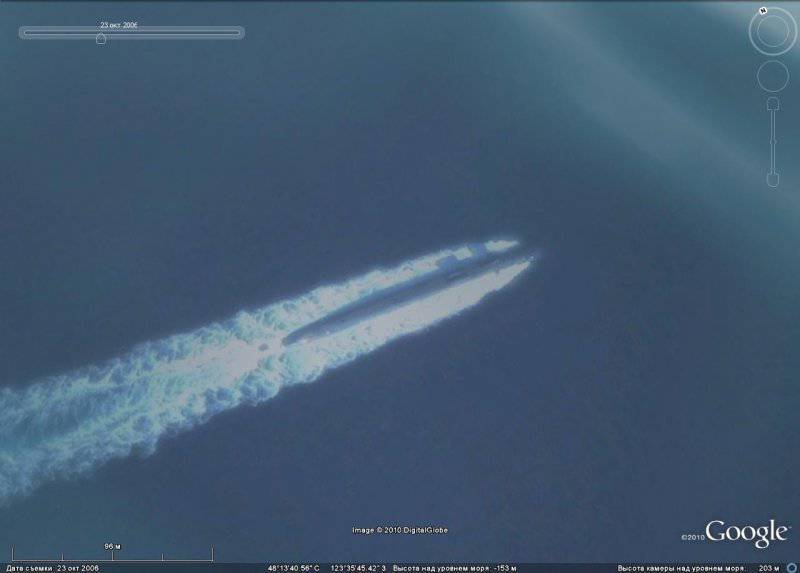
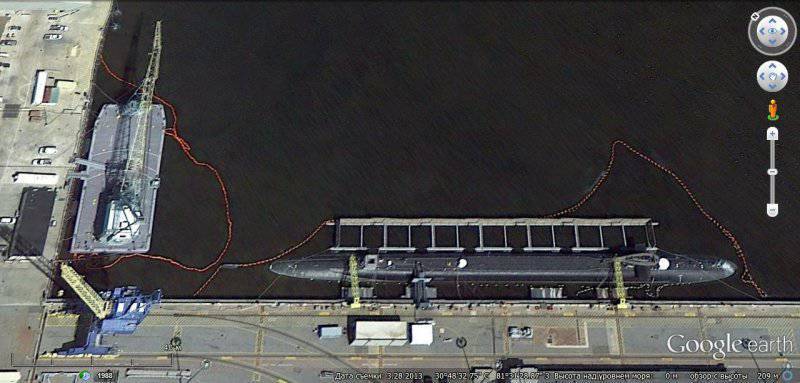
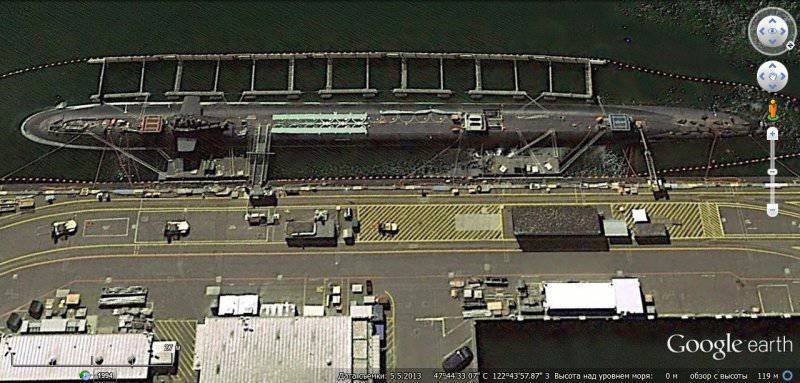
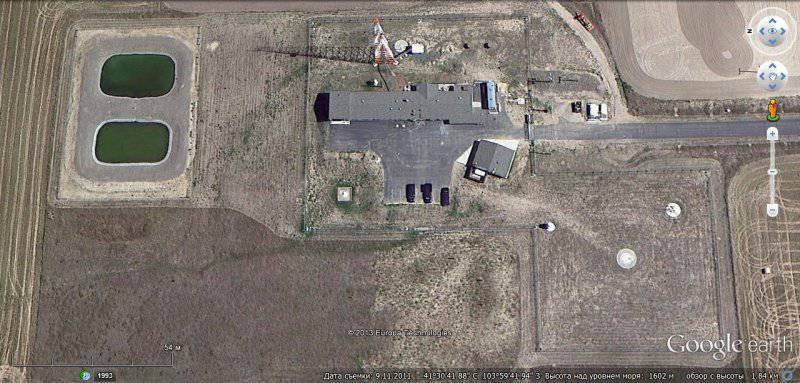
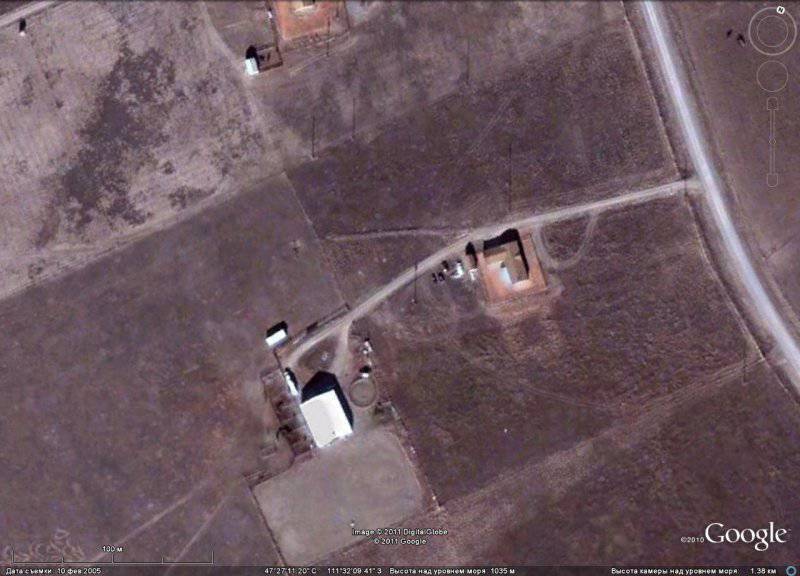
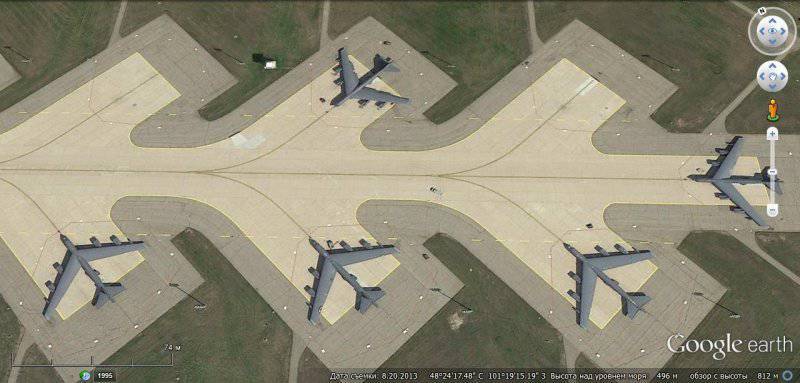
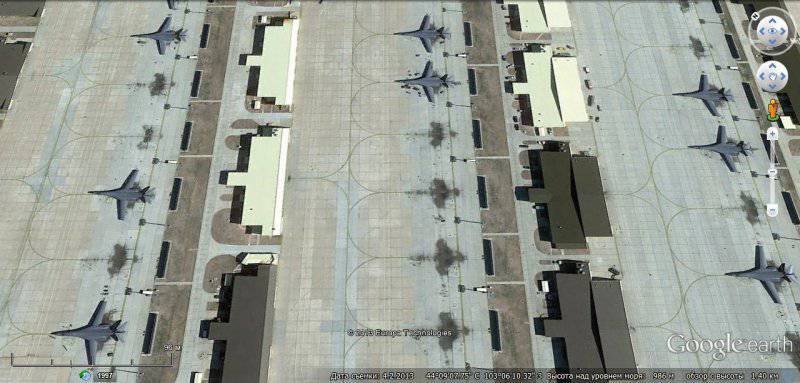
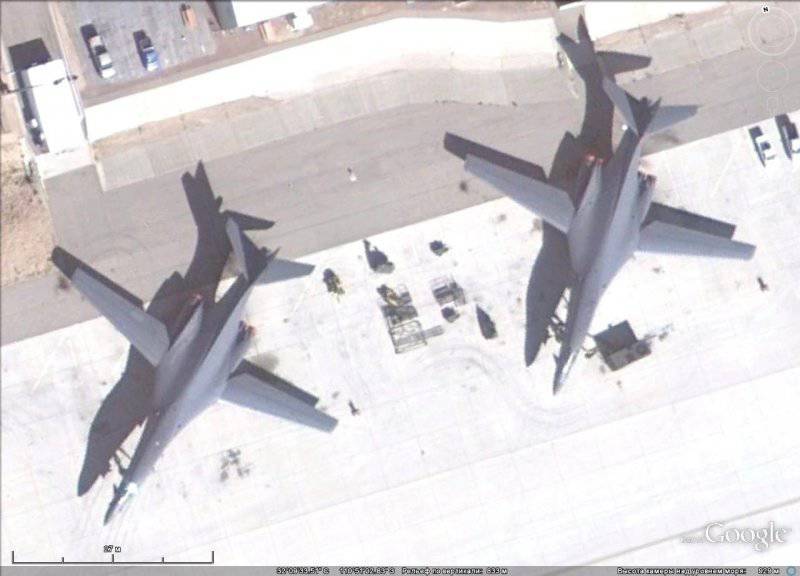
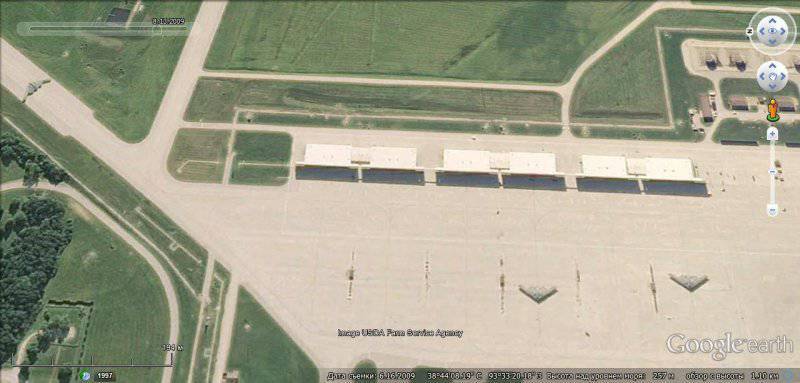
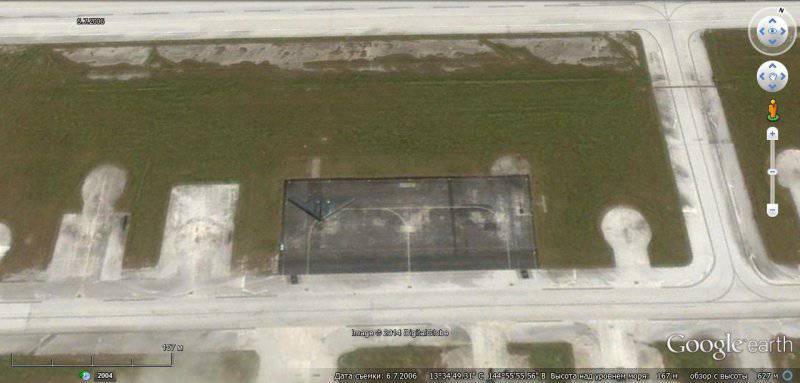
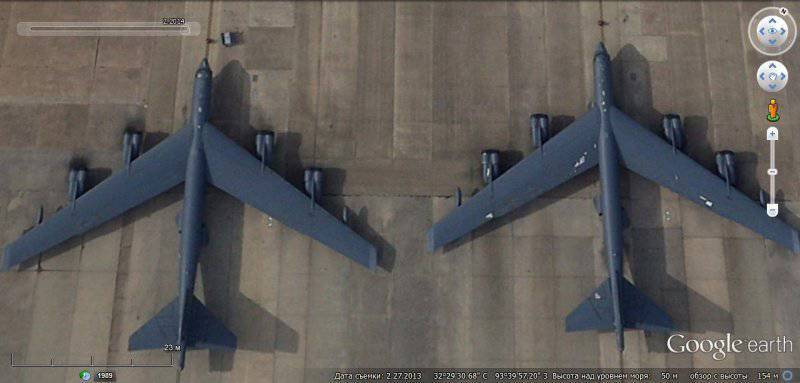
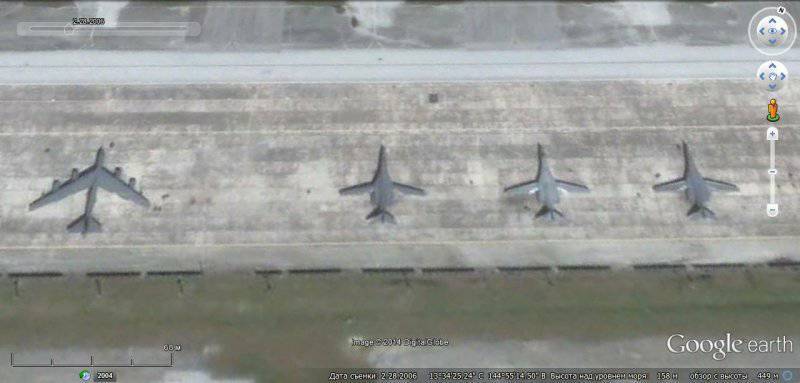
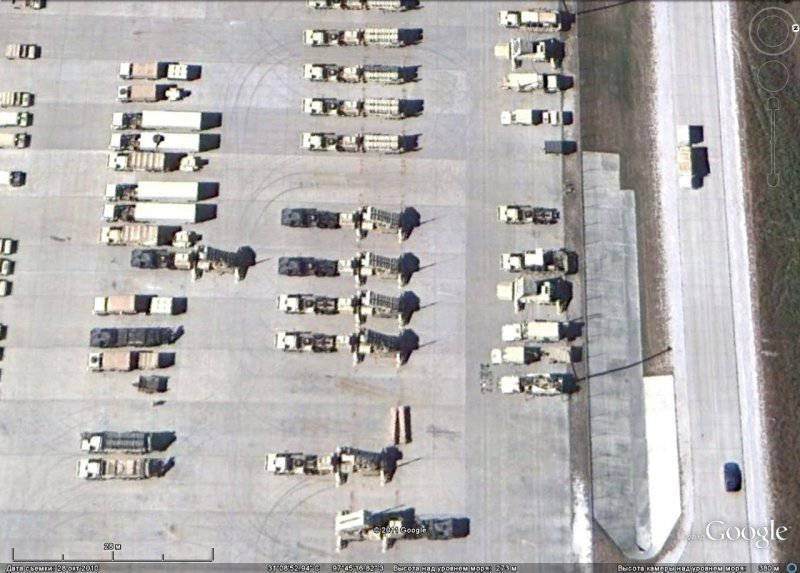
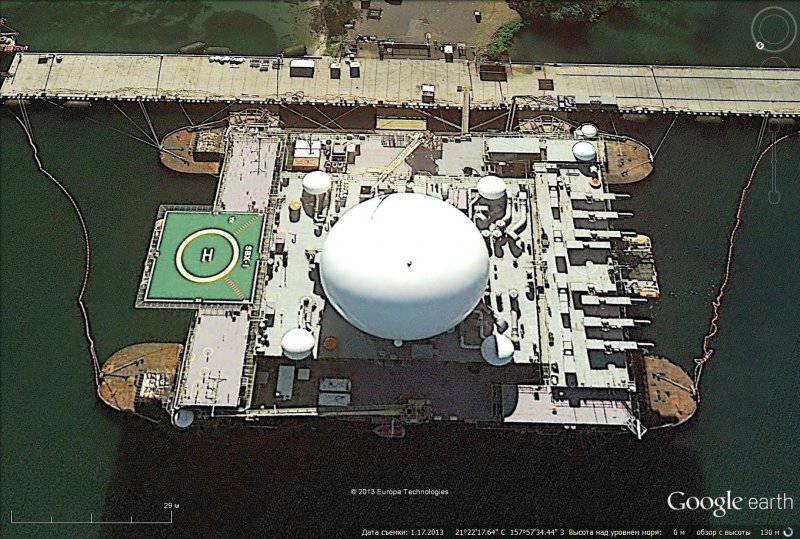
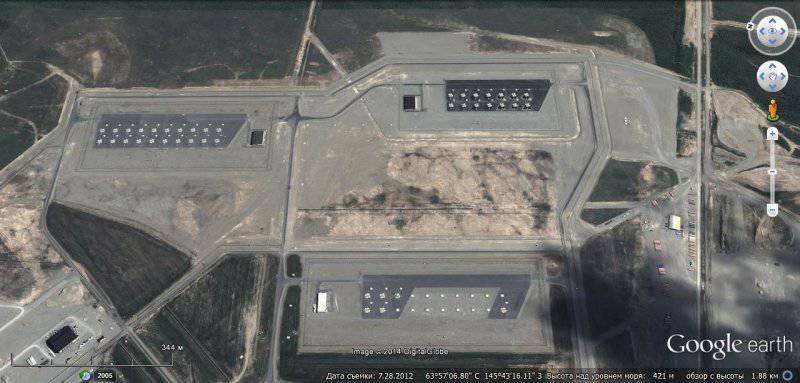
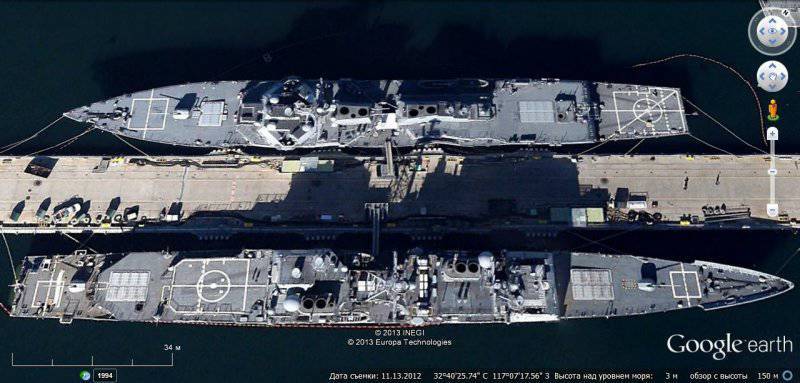
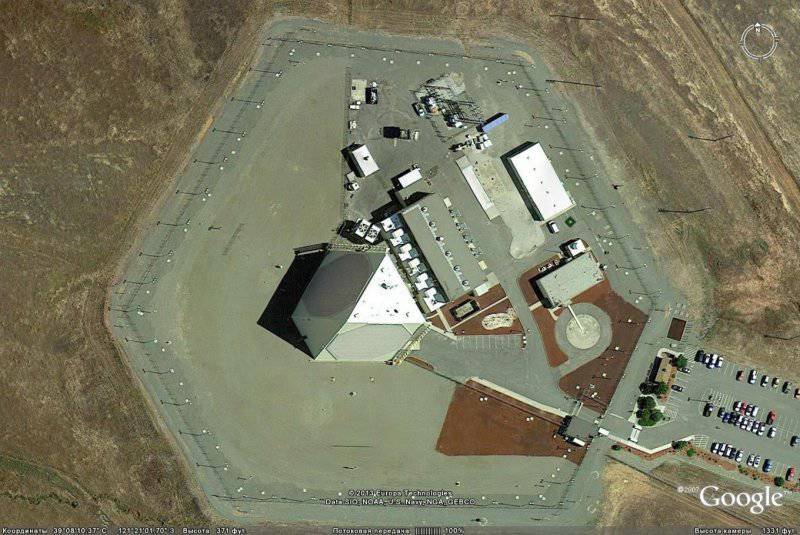
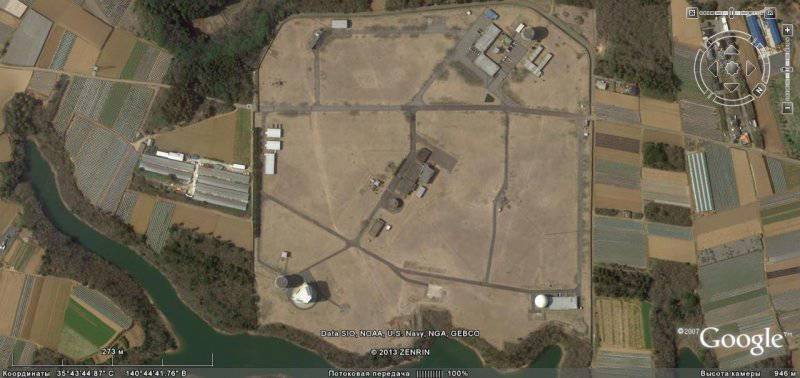
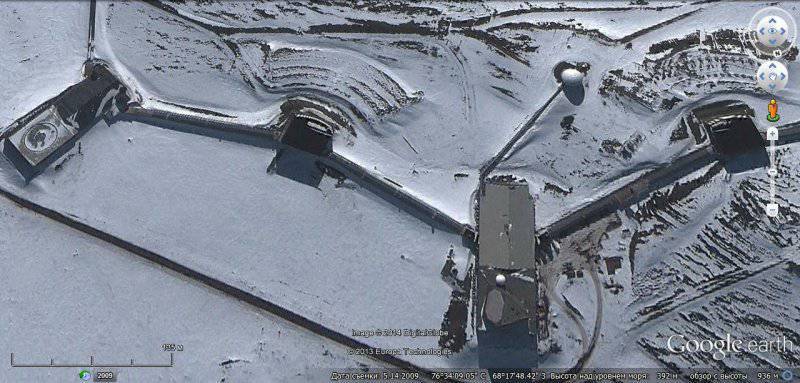
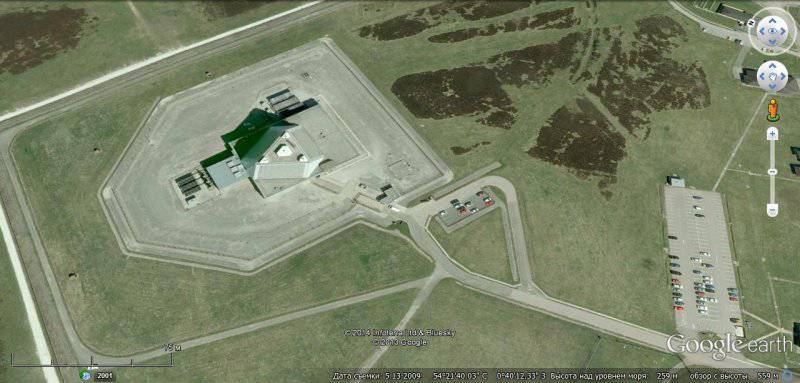
Information